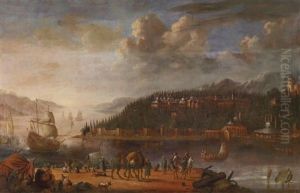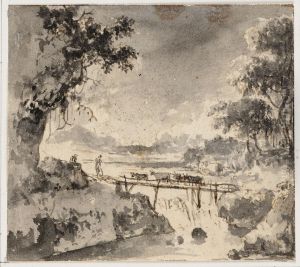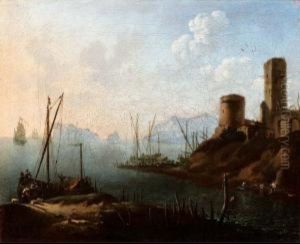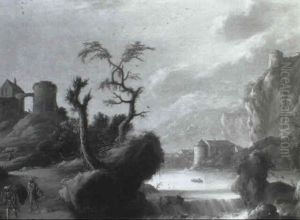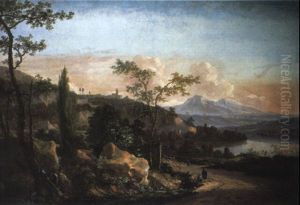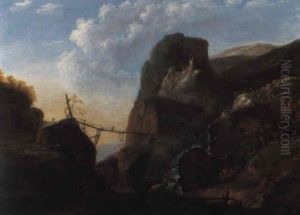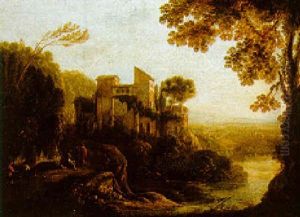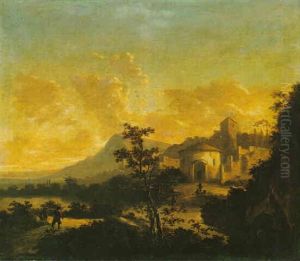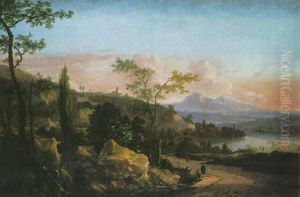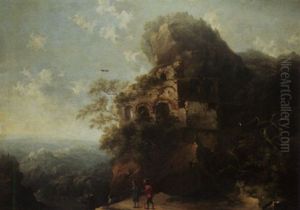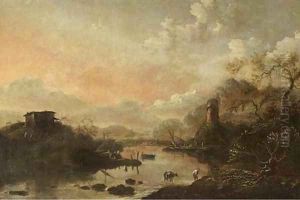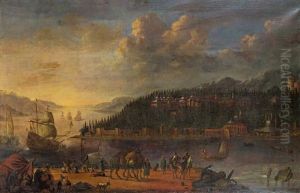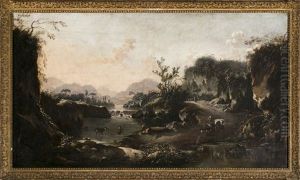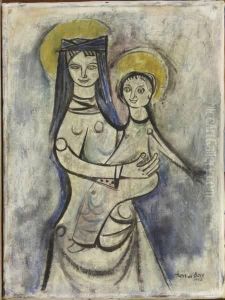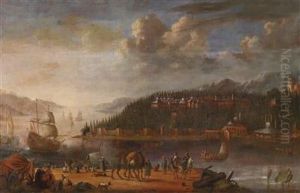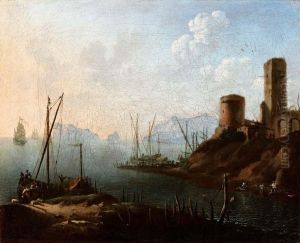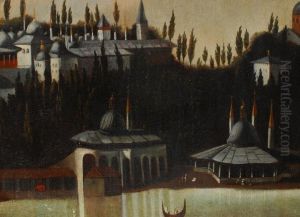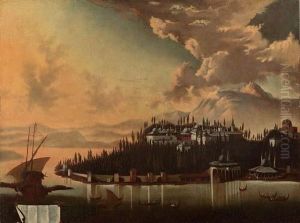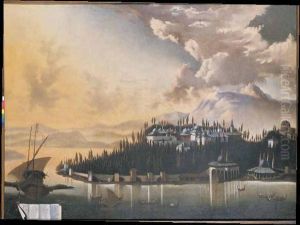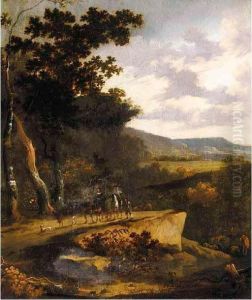Hans De Jode Paintings
Hans de Jode was a Flemish engraver, draughtsman, and publisher born in 1570. He was part of the prominent de Jode family, which played a significant role in the art and cartography of the time. His father, Gerard de Jode (1509-1591), was a well-known cartographer and engraver, and he produced the Speculum Orbis Terrae, an atlas that competed with Abraham Ortelius's Theatrum Orbis Terrarum. Despite the quality of Gerard de Jode's work, his atlas was not as commercially successful as Ortelius's.
Hans de Jode likely received his initial training from his father and continued the family tradition in the arts. Not much is documented about Hans's early life and training, but it is known that he took over the family business after his father's death. He continued to publish and produce engravings, many of which were based on the works of established artists of the time. These engravings helped to disseminate the designs of contemporary painters to a broader audience and were important for the spread of new artistic ideas and styles.
Hans de Jode's works include landscapes and religious subjects, and he is known for the quality and detail of his engravings. His engravings are characterized by a fine technique and are considered to be a valuable contribution to Flemish art of the late 16th and early 17th centuries. He was less focused on cartography than his father and more dedicated to producing fine prints.
De Jode's life and career were overshadowed by the more dominant figures in the art world of his time, such as the Visscher family and the cartographer Willem Blaeu, and as a result, his work did not achieve the same level of fame or commercial success. He died in 1634, leaving behind a body of work that, while not as well-known as that of his contemporaries, provides insight into the artistic and cultural milieu of the period.
